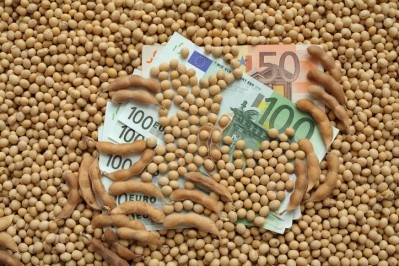Details of US farm aid package revealed

The US Department of Agriculture (USDA) released details of its proposed aid package for feed crop and agricultural producers on Monday.
The plan is expected to provide up to $12bn for members of the US agricultural industry to address damages caused by losses of export markets from a series of tariffs brought against US products, according to the USDA.
“Early on, the President instructed me, as secretary of agriculture, to make sure our farmers did not bear the brunt of unfair retaliatory tariffs,” added Sonny Perdue, US secretary of agriculture, in a release. “After careful analysis by our team at USDA, we have formulated our strategy to mitigate the trade damages sustained by our farmers.”
Although the most recent round of tariffs was implemented earlier in August, we spoke to the US Grains Council to get a better understanding of the damages that feed grain producers have experienced since the start of the trade uncertainties.
The current tariffs have not been the only challenge that feed crop producers have faced when addressing export markets especially in regards to China, said Tom Sleight, president and CEO with that body.
“From the council’s point of view, and the coarse grain point of view, we’ve been at this for a while,” he told FeedNavigator. “Really since 2010 we’ve been fighting one kind of trade issue or another with China – beginning with antidumping and countervailing duties with DDGS two times, and the similar action on sorghum that just recently completed and was withdrawn, and the increase in tariffs on ethanol. We’ve been well experienced with how this is playing out and adjusting to it since February, and since 2010 really.”
However, one element of the support plan is of interest to the council as it seeks to expand international trade, he said. “We have offices throughout the world and we always had good ideas left on the table for lack of funding, so we’re collecting those good ideas and polishing them off,” he added.
Lessons from DDGs and market loss
The US lost most of its export market in DDGs when China added a duty to the feed ingredient following an anti-dumping and countervailing duty investigation in 2017.
“When you get a market closed off like that you have to get busy developing alternative markets,” said Sleight. “We’ve done that over the course of the last several years with DDGS and we’ve really been able to have success there, the price has gone down, but in the volume, we’re doing well in places like Korea and Japan.”
“Everything that we represent – 3-4 years ago China was the top five market for everything we produce, now we’re shut out of it completely for everything we produce except we have a shipment of sorghum,” he said. The shipment sold even with the 25% tariff on the feed crop, he added.
Even with the trade challenge, the US continues to be a competitive supplier, he said. However, there is some hesitation in the market as there is uncertainty about the potential for additional actions to be taken.
“One thing that we see that is constant is buyers and sellers have trepidation – do they really want to stick their necks out and get a big position going into China because there may be some other action and they have to turn boats around,” he said. There is some hope that tariffs on additional products will not be started, he added.
“We think the tariffs might be in place for quite some time, although hope does spring eternal that we’ll see them go away,” Sleight said of the taxes currently in place between China and the US.
Trade expansion and ‘more work to do’
In addition to payments and financial support for producers of feed and food crops and animal proteins, a third element of the support package is the agricultural trade promotion program (ATP). About $2m has been set aside for the effort.
The program is being administered by the USDA’s Foreign Agricultural Service and is set to provide cost-share assistance, the department said. Supported activities include consumer advertising point-of-sale demonstrations, public relations, market research, technical assistance and participation in trade fairs and exhibits.
Applications are being accepted through November 2, or as funding permits, the department said.
The trade support was an area being watched by the council, said Sleight. “It’s a great opportunity to unleash some creativity in current and existing markets and in new markets,” he added.
“We see it as a way to get busier in key places like India, where we don’t have as big or as strong of a presence, and in existing markets like Japan we have a lot of things we could do with ethanol and the value-added side with Japan,” he said. The council also has had a presence in Africa for the last few years, he added.
As the council has planned its efforts previously there have often been more ideas than funding, he said. Some of those are set to be reexamined and prioritized for the near and medium terms with the potential for additional support.
“We might be able to do something with them – areas like Southeast Asia, south Asia including India, Pakistan, Myanmar, Bangladesh, places like that,” he said. “There’s always work to do in Mexico and throughout Latin America.”











